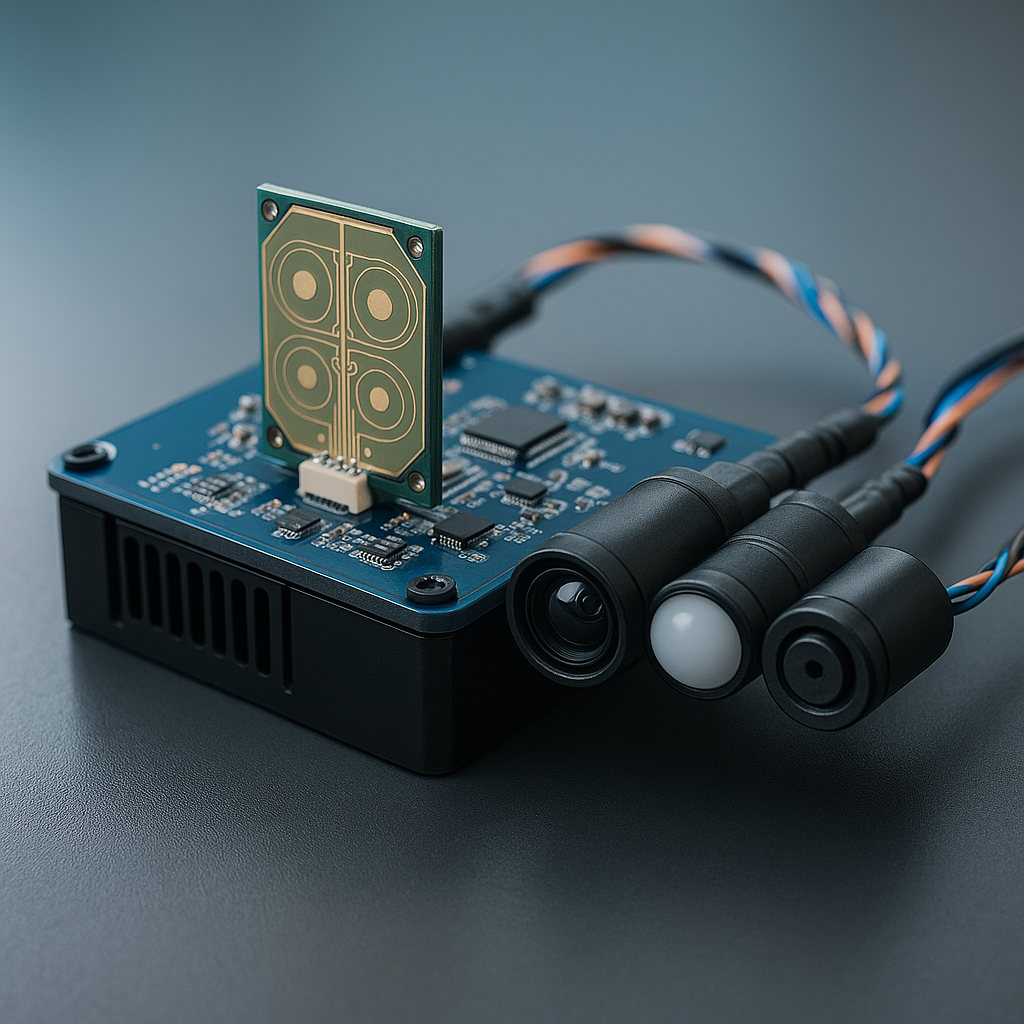
Smarter Decision-Making with Sensor Fusion and Digital Signal Communication
Modern intelligent systems—from autonomous vehicles to industrial robots—depend on more than just one type of sensor. They require sensor fusion: the process of combining data from multiple sensing modalities to create a richer, more accurate picture of the environment. When paired with digital signal communication, this integration becomes faster, more reliable, and more scalable across industries.
What Is Sensor Fusion and Why It Matters
Sensor fusion takes the strengths of different sensors—radar, LiDAR, cameras, ultrasonic sensors—and merges them into a single, coherent dataset. For example, radar might excel at detecting distance in poor weather, while cameras provide detailed object recognition. By combining these data sources, the system can maintain both accuracy and robustness in varied conditions.
Linpowave radar modules are designed for fusion readiness, meaning they output precise range, velocity, and angle data in formats easily synchronized with other sensors, enabling real-time cross-validation and redundancy.
The Role of Digital Signal Communication in Modern Systems
Collecting high-quality data is only half the challenge—moving that data between sensors and processors without delay or distortion is equally critical. Digital signal communication ensures that sensor outputs are transmitted in standardized, error-resistant formats like CAN, Ethernet, UART, or SPI, depending on application needs.
Linpowave implements communication protocols optimized for:
-
Low latency: critical in collision avoidance or industrial safety systems
-
Noise immunity: maintaining data integrity in electrically noisy environments
-
Scalability: integrating multiple sensors into IoT or distributed systems without bottlenecks
Applications of Sensor Fusion with Digital Signal Communication
Automotive & Mobility
Combining mmWave radar with camera and ultrasonic sensors enables ADAS functions like lane change assist, pedestrian detection, and adaptive cruise control, even in poor visibility. Digital communication protocols ensure the vehicle’s central processor receives synchronized data for split-second decisions.
Industrial Automation
In manufacturing plants, sensor fusion merges radar-based presence detection with machine vision for safety monitoring and predictive maintenance. Digital signal buses like CANopen or EtherCAT maintain robust, real-time links between sensor networks and control units.
UAV and Drone Operations
Fusing radar altitude sensing with GPS and inertial navigation data allows drones to maintain precise flight paths in GPS-degraded environments. High-speed serial communication protocols deliver immediate adjustments to flight controllers.
Healthcare & Vital Sensing
By combining radar-based respiration monitoring with pressure sensors in hospital beds, healthcare systems can track patient movement and vitals more accurately. Secure digital communication ensures data is logged and analyzed without loss or delay.
Why Linpowave Stands Out
Linpowave radar modules are designed with sensor fusion in mind—featuring configurable outputs, multi-protocol support, and onboard preprocessing that reduces CPU load on host systems. This allows developers to focus on application-level intelligence rather than low-level signal handling.
| Feature | Linpowave Radar Solutions | Generic Radar Modules |
|---|---|---|
| Fusion Readiness | ✅ Multiple sync outputs | ⚠️ Limited |
| Communication Protocol Options | ✅ CAN, Ethernet, UART, SPI | ⚠️ Often single protocol |
| Data Preprocessing | ✅ Onboard filtering & tracking | ❌ Raw data only |
| Application Integration | ✅ Cross-industry ready | ⚠️ Niche or single-purpose |
The Future: AI-Enhanced Sensor Fusion
As AI becomes a standard component of embedded systems, the role of sensor fusion + digital communication will only grow. AI algorithms thrive on diverse, synchronized data streams—exactly what Linpowave radar systems are built to deliver. This means smarter cars, safer factories, more capable drones, and healthcare systems that respond faster to patient needs.
To explore how Linpowave Radar Sensors can integrate seamlessly into your sensor fusion architecture, visit our homepage or contact us for tailored recommendations.



